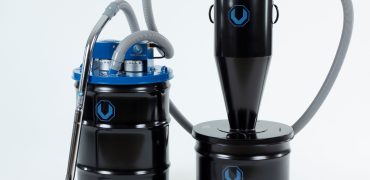With hurricanes a large concern for many parts of North America this upcoming season, having a solid disaster recovery plan in place for your company is key to its success. Being prepared for the worst is an important part of disaster prep. But how can you predict the severity of the impact of a hurricane on your business?
By looking at the predicted hurricane category of an approaching storm, disaster relief agencies and business owners can estimate the impact the storm will have on their property and operations, as well as what disaster recovery and clean up may look like. Although it is only an estimate, it can help agencies and companies prepare for clean up after a hurricane has passed.
Hurricane Category Impacts
Category 1
The weakest level of a hurricane has windspeeds reaching up to 95 mph. While similar to a very strong storm, Category 1 hurricanes can still wreak havoc on buildings and properties in its path. At this level, tree branches are likely to fall and some shallow-rooted trees may be uprooted. Damage to structures will typically come from branches falling on property or downed power lines.
At this category, disaster recovery efforts will likely focus on tree and branch removals and power line fixes, with very little damage to structures due to debris or flooding.
Category 2
A Category 2 hurricane will have windspeeds up to 110 mph. At this intensity, major power outages can occur leading to the need for back up generators and extensive power line work across wide areas. There may be more extensive structural damage with roofs leaking or flooding in low lying areas.
Disaster recovery will include clean up from floods, debris, and power outages to ensure an efficient and thorough recovery so that property owners are safe and do not sustain any long term damage or injury.
Category 3
At Category 3, a hurricane is considered major and devastating damage can occur. With windspeeds up to 130 mph, roofs and structures can be completely destroyed and evacuations may be mandatory to keep people safe. Hurricane Sandy was a Category 3 at its peak and is the second costliest hurricane to hit the US at the time, causing a total of $68.7 billion dollars in damages.
At this level, disaster recovery will need to be efficient and organized. Equipment to help with flooding, power generation in key areas, construction crews, and transportation must work efficiently to ensure citizens are able to return home as quickly as possible, especially in the case of an evacuation.
Category 4
A Category 4 hurricane means catastrophic damage will occur. Hurricane Harvey, which hit Texas in 2017, was a Category 4 storm when it first made landfall and ended up causing $125 billion in damage. A Category 4 hurricane can completely topple structures and cause catastrophic flooding.
Impacted areas may be uninhabitable for the foreseeable future. Any delays in disaster recovery or clean up could lead to catastrophic delays in helping people return to their homes and businesses. Using high quality and reliable disaster recovery equipment and disaster recovery filters is required after a Category 4 hurricane to clean up as efficiently as possible.
Category 5
With winds at speeds greater than 156 mph, catastrophic damage will occur. Hurricane Katrina, which devastated parts of Florida and Louisiana, was a Category 5 and communities are still trying to rebuild from that storm that occurred in 2005. Evacuations in areas where a Category 5 is predicted to make landfall will be mandatory and most structures will likely be beyond repair. There will be powerful winds, catastrophic flooding, huge storm surges (over 19 feet!), and structural failure.
With hundreds of thousands potentially left homeless and businesses unable to function, disaster recovery will be a long road that requires efficient teams, equipment, and budget. If a Category 5 hurricane is approaching, teams can ready their plans and equipment to start delivering disaster recovery relief as soon as possible.
Contact APC Filtration for HEPA Filters for Disaster Recovery
APC Filtration has been providing HEPA filters, standard air filters, and more custom filters to relief agencies and companies worldwide for years. If your company provides disaster recovery equipment in the wake of hurricanes, forest fires, flooding, or other storms, APC’s specialized critical air filters can help aid in the recovery and clean up.
We provide custom HEPA filters, standard air filters, granulated carbon filters, ULPA filters, and more that can work seamlessly with your existing or developing disaster recovery equipment. We provided air filters for machines in the Super Dome in New Orleans after Hurricane Katrina and understand the robust requirements of equipment in the face of a natural disaster.
For more information about APC’s custom air filters, contact us today!











